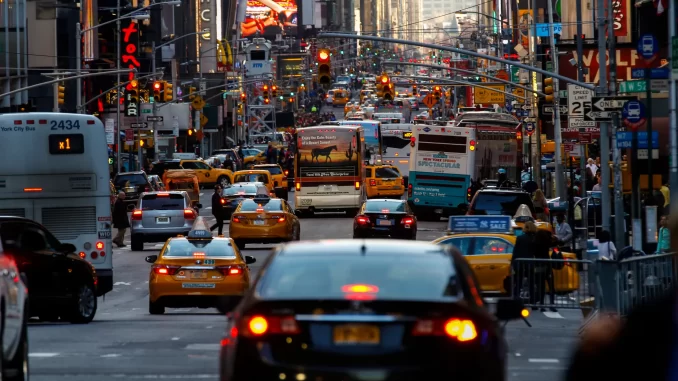
Previously Published in The Messenger
By Raheem Soto
Assemblyman Joe DeStefano says Long Islanders are being wrongly billed for New York City congestion fees tied to trips they never took, which forces them into months-long disputes. At the same time, the city’s transit program collects record revenue.
DeStefano, who represents parts of Brookhaven, first noticed unexplained fees on his E-ZPass statement this winter.
“When I reviewed my bill, I found charges for Manhattan’s congestion zone,” he said. “I’ve never taken my personal vehicle into the city — not once.”
The congestion pricing program, which began January 5, imposes a $15 fee on most vehicles entering Manhattan below 60th Street. State leaders say the effort will cut traffic, lower emissions, and support critical transit upgrades. The system relies on cameras and plate readers at numerous locations throughout Manhattan.
DeStefano makes regular trips to Albany using plates registered to his Assembly office, typically avoiding Manhattan altogether. Yet four days after congestion pricing began, he received two charges for entering the city’s central district.
“It used to take about five business days to clear up a billing mistake,” DeStefano said. “Now it’s 60 to 90 days, with no live person to talk to. Everything’s automated.”
His concerns grew in April when he was charged for traveling the New Jersey Turnpike on a day he was upstate. This spring, he spotted two congestion tolls listed for the same minute, each with a different amount.
“They told me sometimes cameras only catch part of a plate number,” he said. “But that doesn’t explain duplicate tolls or phantom charges from New Jersey.”
Not just an isolated glitch
Other local officials have run into similar problems. State Sen. Dean Murray says he also received congestion charges for trips he never took. A local firefighter, Greg LaGrange, is fighting fees tied to a transponder he no longer uses. Meanwhile, DeStefano’s office says they now receive regular calls from residents who are stuck in lengthy disputes with the toll authority.
At the same time, the program is meeting its main targets. Transportation data shows vehicles entering Manhattan’s toll zone are down about 11% since January, keeping roughly 67,000 cars a day off the streets. Regional traffic delays in the Bronx, Staten Island, and parts of New Jersey have dropped by approximately 10%.
Financially, congestion pricing is on pace to deliver more than $500 million this year for the MTA. In February alone, the agency collected roughly $48 million, followed by $52 million in March, according to state finance reports. Those funds are earmarked for subway and commuter rail upgrades.
Local frustration growing
DeStefano says that while traffic in Manhattan may be easing, billing problems are costing Long Island residents and businesses.
“It’s basically the suburbs footing the bill to balance city budgets,” he said. “When these errors happen, people have thousands tied up in disputes.”
He argues that congestion pricing was billed as a fair way to fix traffic and fund transit, but so far, not enough is being done to protect drivers outside the five boroughs.
“This isn’t about party lines,” he said. “It’s about fairness Long Island families shouldn’t be paying for roads we never used.”
DeStefano is now pushing for tighter state oversight of the MTA’s toll systems. He also encourages residents to keep close watch on their E-ZPass statements.
“Go through every line. If it doesn’t look right, file a dispute right away. Don’t assume it’s correct just because it came from the system.”
Looking forward
With congestion pricing expected to generate half a billion dollars this year, state and transit officials say they will continue to improve plate readers and online dispute tools. For now, DeStefano says he’s waiting to see whether lawmakers who championed the plan will also step up to address its flaws.
“There hasn’t been much pushback in Albany,” he said. “The city legislators wanted this to fund the MTA. But we need to make sure Long Islanders aren’t left paying for mistakes that aren’t ours.”
As the program completes its first year, drivers across Suffolk County are hoping the next bill doesn’t come with surprise charges for roads they never drove on.

